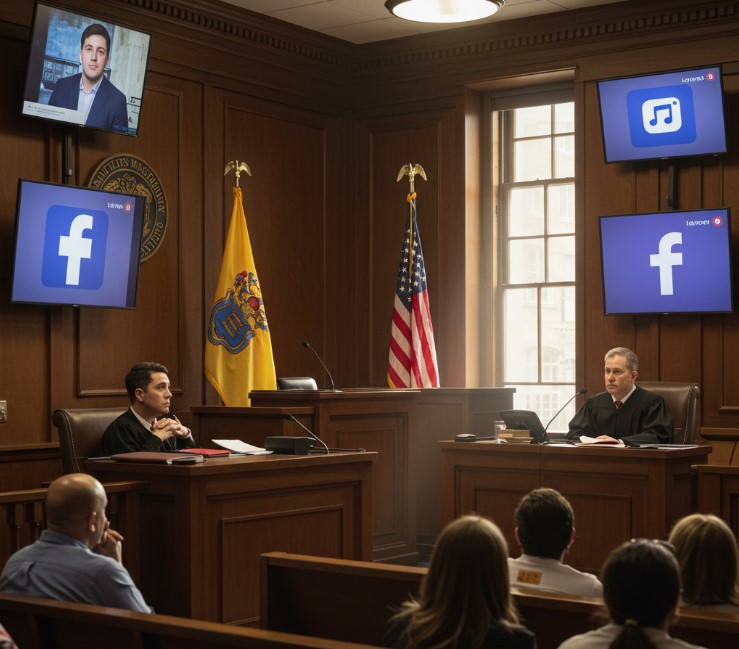By Dennis M. Galvin, Esq.
Over the years, I have been frequently asked about a Zoning Officer’s ability and obligation to enforce conditions of approval. In every request for a variance, a developer or its team will invariably make promises or representations in order to secure an approval. It is incumbent on the Board to reduce those representations to conditions of approval.
Occasionally, promises or statements are made that are important but for some reason don’t get added to the list of conditions. The Courts have found that those representations may still be enforceable. In Park Center at Route 35 Inc. v. Zoning Board of Woodbridge, 365 N.J. Super 284 (App.Div. 2004) Judge Fischer of the Appellate Division endorsed the reasoning of Judge Serpentelli in Fieramosca and held:
In Fieramosca v. Tp. of Barnegat, 335 N.J.Super. 526, 762 A.2d 1075 (Law Div.2000), Judge Serpentelli considered the question-not previously addressed by our courts-whether, in granting a land use application, a local agency is precluded from enforcing a condition if it failed to specifically include that condition in its memorializing resolution. We agree with Fieramosca that a local agency would not be so precluded and also conclude that the record in this case demonstrates that the Board intended to impose, even though not stated in its resolution, a condition for its approval. For that reason and in recognizing the absence of sufficient changed circumstances warranting a lifting of that condition, we affirm. [Emphasis Added]
The best way to take advantage of these cases is to include a condition in all resolutions that: “The applicant shall be bound by all exhibits introduced, all representations made and all testimony given before the Board at its meeting of _____________”.
But how is the Zoning Officer to know about unwritten condition?
While it may not be fair to expect a zoning officer to read the transcript or to listen to the tape of the hearing, it is reasonable to expect that Zoning Officers acquaint themselves with every resolution of approval, especially the conditions of those approvals, because it is their job to ensure compliance with the conditions of approval.
As to any unexpressed conditions, normally an objector who attended the hearing, would bring the defect to the zoning official’s attention. At that point, the Zoning Officer should re-examine the resolution to look for evidence of the condition or promise. If the Zoning Official determines that the objector’s concern is valid then the Zoning Officer or the Board’s professionals should examine the record. If the Zoning Official concludes that a representation was made, then they should consult the municipal attorney. Not all missed changes warrant the full weight of the municipality; but occasionally the issue can be significant and in that case enforcement should occur, that was true in the cases cited above.
GOOD WORKING RELATIONSHIP
In order to insure a good working relationship with a community’s Land Use Boards it is essential that zoning officers ensure that all development occurs exactly as described to the Board at the time of the hearing. The Board’s professionals have an obligation to make sure that the approved plans are revised to ensure consistency with the resolution. However, if the zoning officer discovers that the developer’s plans differ from the resolution and the Zoning Officer should not permit the project to proceed until the developer brings this deviation to the Board’s attention.
Condition enforcement rests on the principle that decisions by Land Use Boards are based upon the testimony and proofs provided to the Board at the time of the hearing; that the Board relied upon those proofs in rendering its decisions and that any change in those facts, undermines the approval. So, any inaccuracy or change in the proofs undermines the basis upon which the Board decided the case and requires the Board’s reconsideration.
The Board in granting approval generally mitigates concerns it has about the potential negative impacts of a given proposal by imposing reasonable conditions. If the applicant does not strictly comply with those conditions, the basis for approval is compromised and the public’s best interest is impaired. So, if the applicant or its’ professionals make a commitment or representation at the time of the hearing, it should be included in the memorialized resolution as a condition of approval, unless the site plan or subdivision map are modified accordingly.
In an effort to assist Zoning Officer’s in recognizing when a development should be stopped and the applicant redirected to the Board due to noncompliance with the conditions of approval, here are some general Guidelines for the enforcement of resolutions and conditions of approval.
GUIDELINES
- All developments must be constructed exactly as shown to the Board at the time of the hearing or as modified thereafter with the Board’s expressed consent. This is particularly true as to proofs regarding the façade or the dimensions of the building envelope. No such changes are permitted without the Board’s expressed approval because Board decisions typically rely upon the architectural details shown to the Board at the time of the hearing. This includes even minor details such as the size and style of windows, the location of doors and/or the color of the brick. All of these exterior details matter.
Example Number One: The brick color was to be colonial red; the Developer cannot find a quarry that currently has that color. The Developer must obtain the board’s approval of an appropriate substitute. While there might not be an identifiable difference between colonial red and Victorian red, it might become a big deal if it was flamingo pink regardless the Board needs to make this call and the project must stop until the Board has ruled.
Example Number Two: The applicant promises to maintain the historic look of the property including its existing window sills; during the course of construction they learn they can’t find windows that fit in the existing sills or that the sills cannot be saved. This fact must be brought to the Board’s attention – changing the windows to existing windows may ruin the historic look of the structure and perhaps may have impacted the Board’s decision making.
- If it is discovered after a resolution is memorialized, that the plans contain an error or the evidence presented to the Board was inaccurate, these facts must be immediately brought to the Board’s attention. The development may not proceed further, until the Board has considered the deficiency and determined the appropriate remedy.
Example Number One: The front steps once constructed actually encroach into the front yard setback by 10 feet not 9 feet. The Board may well find this deviation reasonable and grant it. But as the variance condition is worsened the Board cannot even approve this unless additional notice is given.
Example Number Two: The Applicant promised to cover the foundation of the building with siding they learned after the hearing that their insurance company would not insure any siding that went below the base flood elevation. (The board as a matter of compromise permitted a change in the condition as requested but required landscaping to cover the foundation instead.)
- If an applicant represents that a building is to be adaptively reused or that it has historic merit or that any portion of the building is to be saved, the applicant may NOT demolish the building or those features and merely construct it in accordance with the plans. Once it is determined that those items cannot be saved the project must be stopped and the developer must return to the Board for guidance.
Example Number One: The applicant represents that it cannot comply with the FAR requirements due to the ceiling heights in a Victorian Home, during the construction process the home is demolished. Had the Board known that the home would have been taken down to the ground it and thus be a clean slate, it would have required that the home comply with the FAR requirements.
Example Number Two: The building is historic and was to be reused; the Board placed a condition in the Resolution that more than 50 percent of the building was to be demolished during construction it was discovered that more than 50 percent of the building had to be demolished. Again, the Board may or may not be ok with the reconstructed building. But the take away is that the facts on which the Board has decided the case have changed significantly. The question is… are we really saving the existing building if it is more than partially demolished during construction? It is wrong for the Zoning Officer to permit the matter to proceed provided the finish project matches the plan. The basis of the approval was the preservation of a historic structure, not the construction of a replica. The determination of replica or preservation rests solely with the board. It is possible that the Board may not favor replica’s and in light of the inability to save the building the board might want modern zoning regulations to apply.
- If a condition of approval cannot be met for any reason, including the action of an outside agency such as the County or the DOT, the Applicant must immediately advise the Board and request that the condition in question be rescinded or modified. The Board may elect to exscind the condition or impose a new condition. The Board may also require a modification to the plan in order to satisfy the Board’s concerns. In an extreme case, if the condition was essential to the approval the Board could set aside entire approval.
Example: A Board approved a no left hand turn exist on to a County Road, the County refused to permit that restriction. The matter involved a bank with a drive thru lane. The Board might have elected to reverse the flow of the drive thru lane.
- The Board may delegate certain matters to its professionals, but the authority delegated is strictly limited to the specific determination requested. In the event, the matter becomes complicated or contentious, or the professional is uncertain of the proper course of action, the matter must be referred back to the Board for a ruling or a decision.
Example: If the applicant promised to replace certain sidewalk or curbing at the Board Engineer’s discretion but subsequently disagrees with the Board’s Engineer because it believes that most of the sidewalk in question is in serviceable condition and the board engineer disagrees, then the matter must be sent back to the Board for a ruling.
- The Board’s determinations reflect the considered judgments of community members acting in the community’s best interests. The determinations may not be changed or modified by unilateral action by an applicant, its professionals or the Board’s professionals. To avoid any implication of improper action or favoritism, all changes to an approved plan by a Land Use Board must be referred to the Board as a whole for action.
- If a decision of the Board is unclear, uncertain or ambiguous, the Board should be asked to clarify its resolution. It is not within the authority of the Board’s professionals or the Zoning Officer or any other person to determine what the Board meant or intended. Be careful, the developer and its staff will always argue an interpretation that best serves their project goals.
- Fraud misrepresentation and mutual mistake are grounds for the revocation of any approval. Should it be discovered, at any time, that facts presented to the Board were not true, mistaken or false the Board must be advised, the work stopped and the matter returned to the Board.
Example Number One: A witness representing himself as an expert turns out not to be licensed. This is very serious and may render the Board’s decision void.
Example Number Two: The applicant represents that a stand of trees will be maintained and then before the project is even commenced all those trees are cut and removed from the site. In both situations, the matter must be remanded to the Board for further action.
These guidelines are intended to be illustrative and not in any way limiting. The essential points are that the decisions of land use boards are based upon the facts and representations made at the time of the hearing. That any change to the plans no matter how innocent or minor may be contrary to the board’s decision, that those changes in facts should be brought to the board’s attention and that any deviation from the plans must be ruled on by the Board not the Zoning Officer. As a matter of public policy, zoning officers would be wise to leave such decisions to the Board as the duly appointed representatives of the community. Experience suggests that when zoning officer’s fail to remand matters to the Board questions are often raised about the zoning officer’s motivation. Why would any zoning officer want to face that criticism? While a Developer may be panicked at the loss of time and money as a result of being remanded to the Board, the solution is very easy comply with the Resolution of Approval.
In most of the above examples, the Boards were generally agreeable to amending the plans and the questions raised were resolved within a month. The bottom line is that when the conditions are not met, you should stop the project from proceeding and direct the Applicant to seek relief from the Board.
Dennis M. Galvin is the author of West’s Local Government Law in their New Jersey Practice Series, Volumes 34, 35 and 35A











